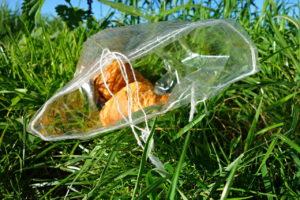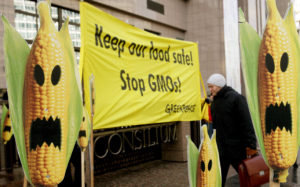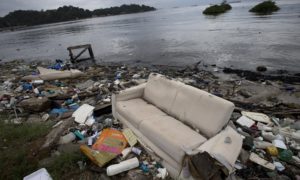Big NGOs like Greenpeace can have enormous impact on people’s perception of environmental issues. What happens when they use this power to further their own agenda, rather than the public good?

Image by Sasin Tipchai from Pixabay.
Businesses all over the world are subjected to a multitude of legislation regulating their activities. Governments try to keep a lid on dubious claims about products and activities with litigation and/or fines.This happens to ensure that human health and the environment are not harmed during these efforts to make money. What happens however, when dubious activities are carried out by non-profit organisations?
Protectors of civil society
NGOs have been instrumental in building up civil society in many countries, protecting human rights and promoting progress. As a result, the regulations controlling these organisations are designed to facilitate and support, not to make judgement about their value or work. Under US law there is very little restriction on the freedom of expression and the US Government does not interfere with how NGOs accomplish their purposes. EU regulations also state that NGOs are self-governing bodies, not subject to direction by public authorities. These liberties comes with a price, though.
Greenpeace and GMO’s
Greenpeace is one of the largest environmental NGOs in the world. It has a code of ethics, which states that it is “committed to the highest possible standards of ethical, moral and legal business conduct”. They are also a founding member of the International NGO Accountability Charter.
One of Greenpeace’s most longstanding campaigns is to get genetically modified (GM) crops banned worldwide. The organisation claims that genetic engineering is a threat to the environment and human health. Additionally, its website states that GM crops should not be released into the environment since there’s no adequate scientific understanding of their potential impact.
Greenpeace has been very successful in this campaign. In 2015, the EU introduced legislation permitting individual member states and regions to ban cultivation of GM crops. More than half of the 28 members have opted to do so.
Ignoring the evidence
The problem is that Greenpeace is lying when they claim that the understanding of genetic engineering is extremely limited – and that we do not know the long term effects of releasing these organisms into the environment, and into the markets for human food and animal feeds.
In 2016, the US Academies of Science, Engineering and Medicine published a study on the development, use and effects of genetically engineering organisms. The Academies reviewed scientific evidence accumulated over the last two decades and examined almost 900 publications on the subject. The conclusion is clear. They found “No substantiated evidence of a difference in risks to human health between current commercially available genetically engineered crops and conventionally bred crops, nor did it find conclusive cause-and-effect evidence of environmental problems from the genetically engineered crops.”
The report stresses that GMOs are not products in themselves, but are outcomes of processes by which scientists are trying to achieve certain characteristics in new crop varieties, exactly like conventional plant breeders do. In other words, all plants and crops we eat have been genetically modified for thousands of years; ever since the first farmers began selecting and breeding the plants giving them the best yields and the desired taste.
Greenpeace is ignoring these facts, while very skilfully manipulating the media and playing on people’s fears of a new technology they don’t understand. In Europe and North America this might not be a problem, because we can afford to choose what we eat. In poorer parts of the world however, where they do not have this luxury, it could cost people their lives.
Golden Rice
More than 100 Nobel Prize winners have signed an open letter asking Greenpeace to stop its efforts to block GM crops. They single out Golden Rice, a crop previously labelled as “environmentally irresponsible and risky to human health” by Greenpeace. Golden Rice contains an artificially inserted gene which boosts the level of (vitamin A-rich) beta-carotene the plant produces. The World Health Organisation estimates that a quarter of a billion people in developing nations suffer from vitamin A deficiency. This deficiency causes two million preventable deaths a year and half a million cases of childhood blindness. It is a problem Golden Rice could help rectify.
Does harm and profit go hand in hand?
So, is it acceptable to wilfully ignore scientific evidence and promote your cause, even if it harms people’s lives, as long as you are a non-profit organisation? Is it OK to manipulate the truth, if as long as you don’t do it for profit? Or, should environmental NGOs be regulated, held accountable and put under the same expectations for ethical behaviour as for-profit organisations? I say yes, because the harm you can do doesn’t depend on how much profit you make.
This is an updated version of a post from 2016, written for BioWeb.ie



 Food packaging is not a subject that gives a lot of people sleepless nights. Packaging is considered a waste product. It’s something we remove from our groceries and put in the bin as soon as we return from the supermarket. Our food, especially fruit and vegetables, look more authentic without it and we don’t feel it has any value. On top of that, it creates enormous piles of waste.
Food packaging is not a subject that gives a lot of people sleepless nights. Packaging is considered a waste product. It’s something we remove from our groceries and put in the bin as soon as we return from the supermarket. Our food, especially fruit and vegetables, look more authentic without it and we don’t feel it has any value. On top of that, it creates enormous piles of waste.
 Photo credit: Silvia Izquierdo / AP
Photo credit: Silvia Izquierdo / AP